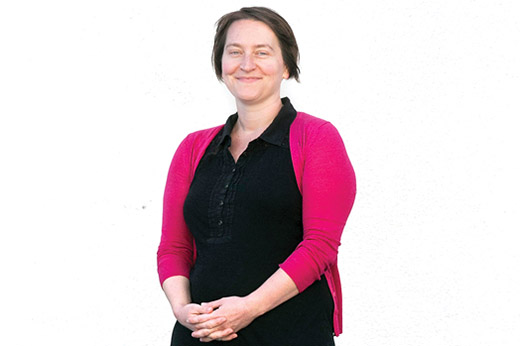It was 2012 when the small California office of the Human Rights Data Analysis Group (HRDAG) got an unexpected call. The United Nations Office of the High Commissioner for Human Rights couldn't get its people safely on the ground in Syria to count how many Syrians were being killed in the ongoing armed conflict there. Could Megan Price, who received her PhD from Emory in 2009, and her team at HRDAG come up with reliable ways to estimate deaths 7,000 miles away?
The answer was yes. As executive director of HRDAG, Price has made a career overseeing the novel development and use of statistical data to shine light on human rights abuses. Those analyses include a series of reports over the past five years for the United Nations and Amnesty International, part of an effort to fully understand the extent of mortalities in the Syrian conflict. (HRDAG counted 191,369 documented, identifiable deaths just between 2011 and 2014 as a result of the conflict, with the assumption that many more were unreported and unidentified.)
Other projects include the creation of a mathematical model to identify probable locations of mass graves in Mexico as well as a review of so-called "predictive policing" algorithms in the U.S. Predictive policing uses data related to past known crimes to anticipate locations of future criminal activity, which can perpetuate biased policing practices.
In Guatemala, HDRAG used random sampling of massive police archives to assess the national police's role in that country's civil war. In one particular case involving a missing student activist, their analysis provided compelling evidence that led to that chief of police's conviction for orchestrating that student's disappearance.
While the job of counting deaths and enumerating human rights abuses may not be for everyone, for Price it's an important way to connect her passion for social justice with her love of biostatistics. "It's very true that the subject matter we work with every day is emotionally heavy," says Price, who was recently ranked in the Top 12 Women in Data Science by Information Week. "But when I was at Rollins, I knew I wanted to do something that was working for the common good. From the beginning, I was interested in statistics as a tool. To do justice to the substantive piece, I have to get the technical piece right."
Price first heard about the HRDAG while completing her concentration in human rights at Rollins School of Public Health. For her, HDRAG's mere existence sparked an "aha!" moment.
"I thought, 'That's it! That's how statistics should be used!'" she says.
Price joined the group immediately after earning her PhD. Four years later, HDRAG became its own nonprofit, and she was promoted to director of research. In 2015 she became its executive director. Price also serves as a research fellow at the Carnegie Mellon University Center for Human Rights and as a member of the Technical Advisory Board for the Office of the Prosecutor at the International Criminal Court. She is also the human rights editor for the Statistical Journal of the International Association for Official Statistics.
Price is always glad when her statistical analyses help bring about justice, as was the case with the criminal prosecutions in Guatemala. In other areas where armed conflict continues—like Syria—she works in preparation for the day in which her analyses can be used for good. "What we do with this information is the million-dollar question," she says. "It depends upon what justice mechanism becomes available and how the conflict is resolved. There may be investigations and court cases. There may be a truth commission mechanism."
Despite dealing daily with sobering statistics, Price is grateful to have found a niche that fits her skills and passions—and buoyed by knowing her work can make an impact. "Every day I get to come in and do a job that feels so gratifying," she says. "And, of course, there's more to be done."

